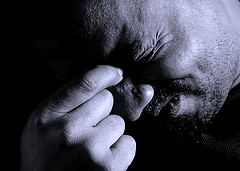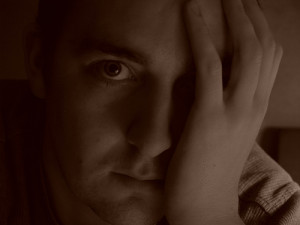Botulinum toxin or Botox currently used in the treatment of bruxism, migraine and tension headaches was first identified in 1897 as a causative agent of botulism food poisoning from the anaerobic bacterium Clostridium botulinum. With purification of the toxin commencing in 1944, serotype A (Botox A) was developed in 1968 for potential clinical application. Botox is the most potent known biological molecule with an ability to exert a paralysis effect on various neurological disorders. In high doses Botox can cause diffuse widespread muscular paralysis, an inability to breathe, and death.
Mechanism of Action
Botox A has the longest duration of action being 4–6 months and therefore has the highest clinical use. Botox A has increasingly been used over the past two decades for a wide variety of systemic conditions, in particular those that are characterised by involuntary muscle contraction. These include blepharospasm, strabismus, cervical dystonia (spasmodic torticollis), spasmodic dysphonia, and localised spasticity. Complex regional pain syndrome (CRPS), Parkinson’s, cerebral palsy, chronic migrainous headaches, and oromandibular dystonias are other conditions that may incorporate Botox A in a multidisciplinary management regimen.

Botox A has also been used extensively in special needs patients and the cosmetic surgery industry. More recently whilst it is not considered a first line treatment option, Botox A has been used in the treatment of bruxism and TMD. Prior to employing Botox A as a treatment modality for bruxism however, it is imperative that a definitive diagnosis of bruxism be made and that all other non-invasive and commonly validated methodologies are utilised in an attempt to manage the condition. There has also been an increase in interest amongst dental practitioners in the use of Botox A and dermal fillers for aesthetic purposes.
Currently, the Dental Board of Australia only supports the use of Botox by registered practitioners with education, training, and competence for the treatment of temporomandibular joint disorder/dysfunction (TMD).
A communiqué from the DBA dated 26 September 2011 states: “The opinion of the Board is that injection of Botox outside of the use indicated in the Policy does not form part of the practice of dentistry. Broader use by dentists whether trained or not is not appropriate. Dental practitioners should consult the TGA and manufacturers’ approved therapeutic use of such medications. Practitioners should also consult their professional advisers and indemnity cover for use of Botox in Australia.”
Bruxism and TMD
Over the past decade there has been an increase in the number of studies investigating the use of Botox A to treat TMD’s and bruxism with the dose range being on average from 35 to 200 U per side. The muscles typically injected have been the masseter, the temporalis and the medial pterygoid which are the main muscles thought to be involved in bruxism.
 It has been speculated that Botox A actually reduces bruxism by disrupting the trigeminal motor nucleus feedback loop and inhibits the central bruxism generator through mandibular muscle paralysis. Alternatively, periodontal mechanoreptors during mastication may be deactivated by Btx-A which have a facilitatory effect on mandibular closure motor neurons.
It has been speculated that Botox A actually reduces bruxism by disrupting the trigeminal motor nucleus feedback loop and inhibits the central bruxism generator through mandibular muscle paralysis. Alternatively, periodontal mechanoreptors during mastication may be deactivated by Btx-A which have a facilitatory effect on mandibular closure motor neurons.
The possible clinical effects of Botox A in the treatment of bruxism and TMD’s at first appears attractive. However, the long-term efficacy of Botox A in the treatment of TMD’s is still under question and further research is required. A recent clinical study at our practice using the PREEMPT protocol for chronic migraine with a total dose of 195 units per treatment over 6 months showed that Botox A may have a sound place in the treatment of orofacial pain disorders and headaches in specific clinical situations.
From a clinical observation:
Botox may be considered a useful adjunct to the treatment of myofascial TMD pain for those patients that are refractory or intolerant to conventional pain management therapy.
As TMD’s are now considered to be part of multifactorial pain conditions requiring a similar multidisciplinary approach to treatment as other general chronic pain syndromes (in comparison to traditional dental oriented treatments), and given the high cost of Botox A and its transient nature, it certainly should be considered that Botox A is not at present a ‘first line’ choice of treatment for TMD. Importantly, Botox A should only be administered by persons that have a sound knowledge of how to treat TMD conditions using best practice and evidence based medicine and dentistry. When administered by untrained persons whom have limited understanding of TMD and bruxism, cost vs benefit is limited at best.
Oromandibular Dystonia
Dystonia is a neurologic disorder postulated to be a condition of central motor processing disorder characterised by abnormal and involuntary muscle movements. Dystonia’s can affect many different parts of the body and may include symptoms such as muscle weakness, abnormal or involuntary movements, cramps, dysphasia, tremor, and shortened muscle/tendon lengths. They are classified as focal, segmental, and generalised depending on the region of the body that is affected.
Oromandibular dystonia (OMD) is a focal dystonia manifested by involuntary muscle movements, and can affect the muscles of mastication, facial expression, eyelids, and the tongue. OMD may be seen in the dental practice and be mistaken for an articular or non-articular TMD when there is associated masticatory muscle spasm, limited mandibular range of movements, deflection or deviation on opening, or masticatory muscle pain. Symptoms of OMD are a result of forceful and repetitive muscle movements and contractions that can include deviation of the mandible on opening, mandibular clenching and trismus, a restricted opening, an inability to close the mouth, dysphasia, dysphagia, dysphonia, and bruxism.
OMD may appear alone as a neurological disorder (with or without a hereditary family history) or it could present as secondary exposure to certain drugs or disorders such as Wilson’s disease. Exposure to some antidepressants, anti-anxiety agents, anti-nausea/vomiting agents, neuroleptics, and other selected pharmaceuticals have been known to cause drug-induced dystonia reactions.
Whilst bruxism in itself is considered a multifactorial disorder, when an OMD is present the involuntary muscle contractions can mimic and/or contribute to diurnal or nocturnal bruxism and clenching through a series of repetitive rhythmic masticatory muscle activity (RMMA). This may lead to masticatory muscle pain and fatigue, headaches, tooth wear and sensitivity, TMJ pain, and a chronic breakdown of sleep, and consequently be misdiagnosed as primarily bruxism or a TMD.
It has also been suggested that bruxism may be in fact a form of an OMD. Bruxism associated with an OMD may be idiopathic, diurnal, nocturnal, or associated with mental retardation and neurodegenerative disorders such as:
• Parkinson’s disease (jaw tremor, orofacial, tardive and levodopainduced dyskinesia’s characterised by involuntary repetitive movements of facial, buccal, oral, and cervical muscles, induced by long-term use of antipsychotic agents, sometimes persisting after withdrawal of the agent)
• Multiple system atrophy (especially due to levodopa-induced dyskinesias)
• Progressive supranuclear palsy Huntington’s disease
• Hemimasticatory spasm
• Hemifacial spasm
The OMD therefore diagnosed as a TMD and treated as such will usually fail to respond to measures such as occlusal splints and other commonly employed dental management techniques. This can lead to an exacerbation of concomitant symptoms such as stress and anxiety and an increase in overall pain levels when the anticipated outcomes are not achieved by the patient.

